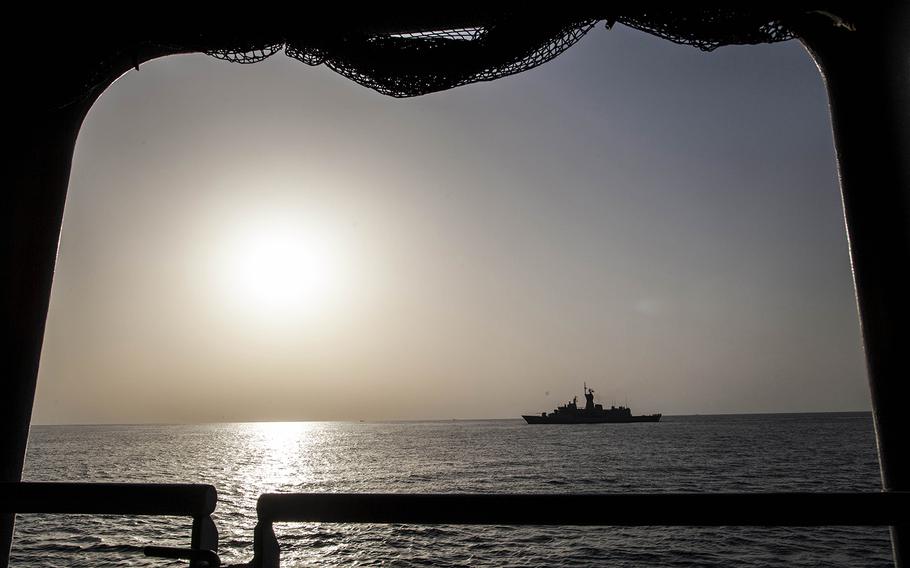
Royale Australian Navy frigate HMAS Arunta passes alongside the Royal Navy helicopter carrier HMS Ocean during exercise Unified Trident in the Persian Gulf Jan. 31, 2016. Chris Church/Stars and Stripes (Chris Church/Stars and Stripes)
ABOARD ROYAL NAVY SHIP HMS OCEAN — The multilateral exercise Unified Trident began Tuesday in the Persian Gulf amid rising tensions between the U.S. and Iran.
The exercise kicked off one day after reports that Iran launched a ballistic missle test and Iranian-backed Houthi rebels struck a Saudi coalition ship off the western coast of Yemen.
Adding to the tension: President Donald Trump could scrap the Iran nuclear deal, saying throughout his campaign that it was bad for the U.S.
Despite the setting, Unified Trident has nothing to do with Iran, said the exercise planner Royal Navy Lt. Cmdr. Ant Wallace, who spoke to the media and answered questions.
“It’s not a show of force to the Iranians at all,” Wallace said. “The reason we are doing this exercise, and I’ll stress this over and over again, is because it’s easier to do here than it would be anywhere else. It’s a key opportunity to bring ships together, to exercise together and to operate together. The fact that it’s in the [Persian] Gulf is coincidental, really.”
Unified Trident involves the British Royal Navy, Royal Australian Navy, French Marine Nationale and U.S. Naval Forces Central Command. The combined task force is led by British Royal Navy Commodore Andrew Burns.
Task Force 50 is in charge of planning and conducting strike and contingency operations, and it is typically led by a U.S. aircraft carrier strike group commander. Burns took over Task Force 50 in mid-November as the first Royal Navy officer to lead a U.S. task force in the Middle East.
The three-day exercise is designed as practice on how to aggregate a number of forces in the Persian Gulf, one of the central roles for CTF 50, Wallace said. The exercise also tests the task force’s ability to address conventional and unconventional maritime and air threats.